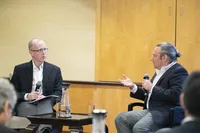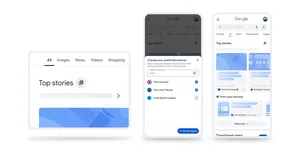A united front against online piracy in Asia Pacific

With more people staying at home, video streaming is up everywhere—and by as much as 60 percent in Southeast Asia, according to a Media Partners Asia study. That makes it all the more critical that we and our partners in the region continue to address the serious challenge of online piracy.
Google’s overall approach is set out in our Anti-Piracy Principles, and we work closely with media and entertainment industry organizations to tackle new challenges. Two years ago, we started talking to the Asia Video Industry Association (AVIA), the trade group for the video ecosystem in Asia, about how we could collaborate. Since then, we’ve been having quarterly forums with their members: broadcasters, operators and telcos. We also make sure AVIA members are aware of new features like What to Watch, to ensure their legitimate content is visible and prominent on the Search results page.
To learn more about online piracy in Asia Pacific (APAC), we spoke to Louis Boswell, CEO of AVIA.
How does the APAC region differ from others when it comes to broadcast, media and entertainment?
There are very divergent tastes in content across APAC, which is not surprising given the different cultures and languages. The genres that work best across multiple markets would be a mix of Western, Korean and Chinese content. These genres are widely available, but fragmented over many services, some not mature, and business models vary. In parts of the region, people have never developed a habit of paying for content, so platforms often feel they have to adapt their business models to compete with piracy in a far more pronounced way than in the West. In terms of consumption, many markets are mobile-first.
What role should education play in efforts to fight piracy? Do consumers in the region know how to access legitimate alternatives and why they should choose these options?
Consumer awareness is important to any anti-piracy strategy. Consumers need to know the very real risks they face from malware when accessing piracy sites or using illicit applications. Most people know that what they are accessing is stolen content: in a recent YouGov survey, commissioned by AVIA’s Coalition Against Piracy (CAP), when asked who was most responsible for preventing piracy, Singaporeans chose “the individual, for choosing not to watch pirated content.” There are many legal and reliable video streaming services available in Southeast Asia. Websites that are dedicated to infringement are unreliable, put people at risk of malware infection, and fund crime groups.
Over the last few years, Google has been a partner of AVIA—working to fight piracy in the region. Why are these types of partnerships worthwhile?
Piracy is an industry-wide problem, and industry needs to come together to fight it. AVIA represents many of the biggest IP owners in the region and Google has the most popular search engine and online video platform, so a couple of years ago we both agreed that it made sense for us to sit down and have a frank and open conversation about the problems of piracy, understand the tools and measures Google is putting in place, and provide a forum for our members to raise concerns that Google may be able to address.
It has been a constructive and collaborative process which has been appreciated on both sides. And it has led to new initiatives, including a workshop AVIA arranged for many of its Asia-based IP creators across India, Hong Kong and Southeast Asia—designed to make better use of Google’s tools for removing infringing content. It’s a positive step that content producers, distributors and industry associations are now working together to address the problems, as well as partnering with technology platforms, payment processors, e-market platforms and other intermediaries.






